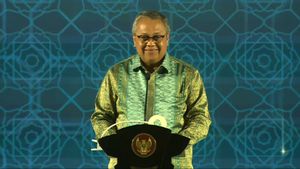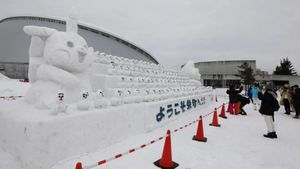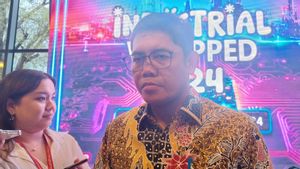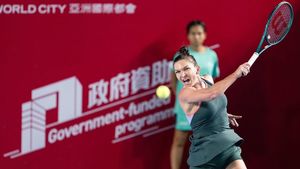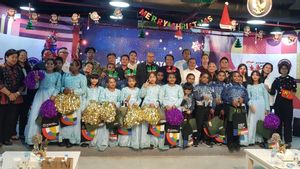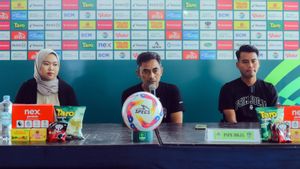JAKARTA - The government through the Coordinating Ministry for Maritime Affairs and Investment (Kemenko Marves) highlights Indonesia's potential as the leader of hydrogen and ammonia producers at the regional level.
In an effort to achieve net zero emissions, Indonesia is considered to have a competitive advantage in clean hydrogen production which can bring significant economic benefits.
"Hydrogen will play an important role in the global energy system in line with the efforts of various countries to decarbonize and build a hydrogen ecosystem. Natural gas resources are abundant, CO2 storage capacity, and renewable energy potential places Indonesia as a regional leader in hydrogen production," said Deputy Coordinating Minister for Maritime Sovereignty and Energy at the Coordinating Ministry for Maritime Affairs Jodi Mahardi as reported by ANTARA, Thursday, June 20.
Jodi added that Indonesia is geographically close to countries that have high demand for clean hydrogen, such as Japan, South Korea, and Singapore, which together represent the hydrogen market of around 4 million tons per year. Indonesia has the second largest gas reserves in the Asia Pacific and the region's third largest CO2 storage potential for blue hydrogen.
Meanwhile, for green hydrogen, Indonesia has the second largest geothermal potential in the world and a potential solar power capacity of more than 200 GW.
"The hydrogen sector presents new opportunities for Indonesia to take advantage of its abundant energy resources to encourage higher economic growth," he explained.
Along with countries' efforts to achieve the net zero emission target, global hydrogen demand is expected to increase more than fourfold between 2020 and 2050.
In 2023, 1,418 clean hydrogen projects were announced globally, with an investment value of 570 billion US dollars across the hydrogen value chain.
Amongia, which is the main ingredient in fertilizer production, can be produced using green and blue hydrogen, so that it becomes cleaner.
The potential benefits of clean ammonia for Indonesia include as the main ingredient in fertilizer production, a large industry in Indonesia with a market value of 4.5 billion US dollars.
Clean ammonia can also help overcome the risk of exporting 1 billion US dollars worth of Indonesian fertilizer which is threatened by the Carbon Border Adjustment Mechanism (CBAM) regulation implemented by developed countries.
Indonesia's significant and growing fertilizer market is also a well-established customer base for hydrogen.
For the record, PT Pupuk Indonesia produced 18.7 million tons of fertilizer in 2023 with a market value of 4.5 billion US dollars.
The Indonesian government has developed a strategic plan and is actively building the domestic hydrogen sector with concrete steps, such as increasing efficiency in the use of hydrogen to above 50 percent, developing access to local and micro-scale electricity networks, creating clear regulations on emissions trading, carbon taxes, and incentives, as well as integrating the hydrogen industry and infrastructure improvements.
Low-carbon hydrogen production in accordance with international trade policies, low-carbon fuel use for export commodities, and bilateral technical agreements are also the main focus.
Several clean hydrogen projects under development in Indonesia include Batam Bintan Green Hydrogen Cluster with a planned capacity of 25 100 ktpa, operating in Q1 2027.
Then, the Sumatra Clean Hydrogen Cluster with a planned capacity of 25-100 ktpa, operates in Q1 2027.
Then, the Cilegon Clean Hydrogen Cluster with a planned capacity (TBC), operates in Q3 2027.
Furthermore, North Sulawesi Green busyia Cluster with a planned capacity of 500 ktpa, operates in Q1 2030.
SEE ALSO:
In addition, the Sumatra-Java Blue temponia Project with a planned capacity of 730 ktpa (TBC).
"The five clean hydrogen projects are being developed in Indonesia, utilizing significant renewable energy resources and the country's carbon storage capacity to produce green and blue hydrogen," said Jodi.
The English, Chinese, Japanese, Arabic, and French versions are automatically generated by the AI. So there may still be inaccuracies in translating, please always see Indonesian as our main language. (system supported by DigitalSiber.id)





